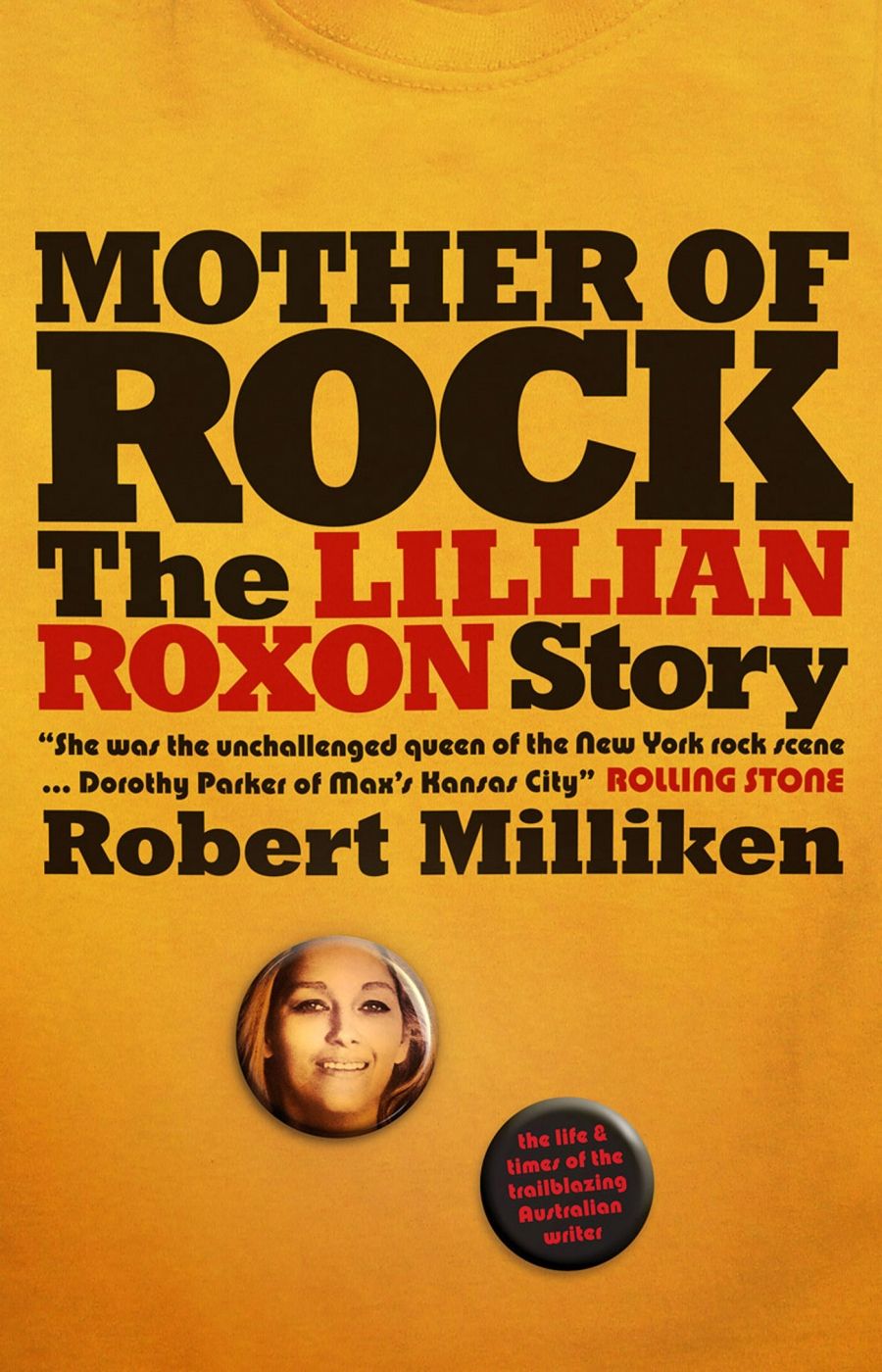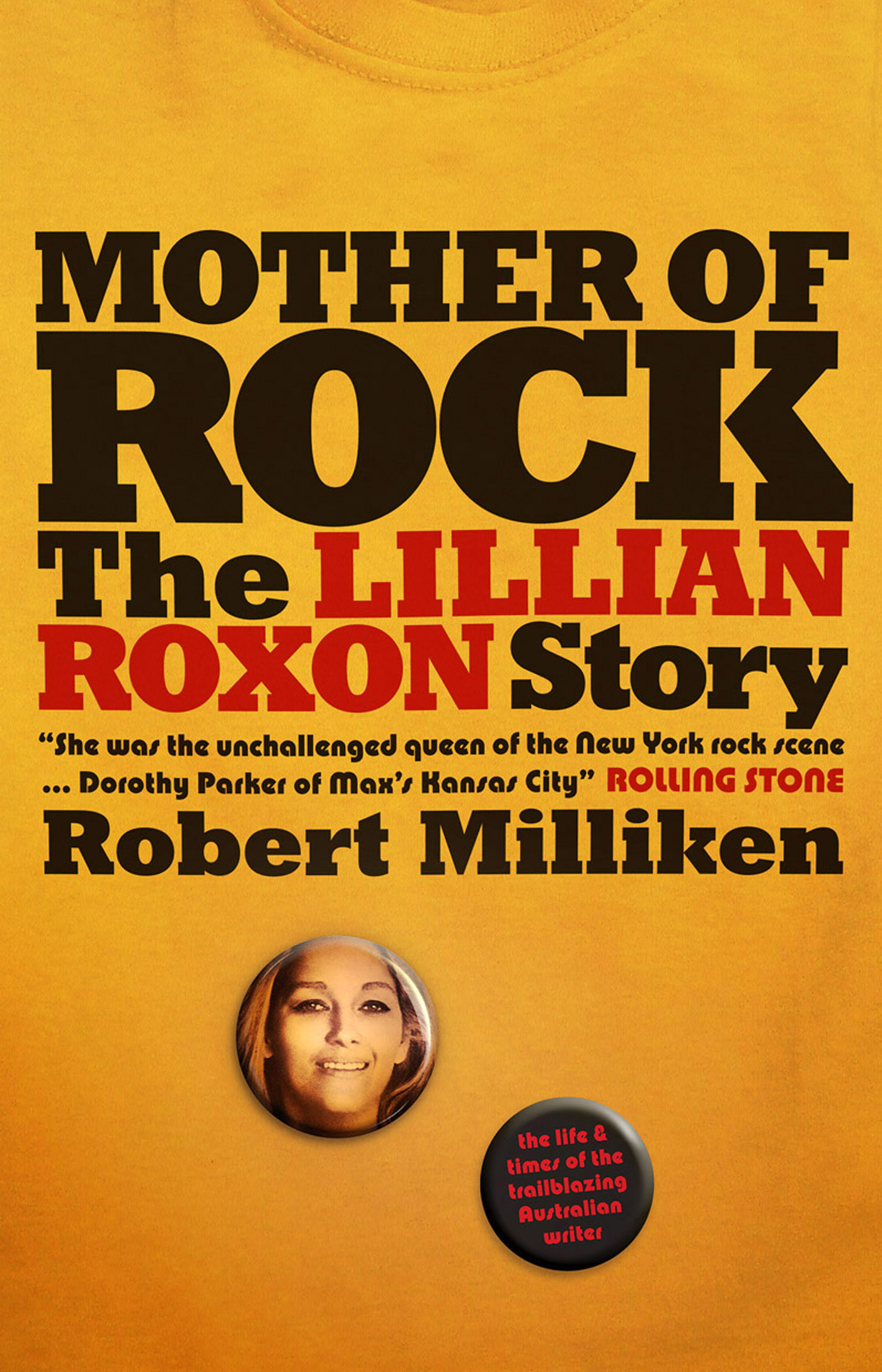
- Free Article: No
- Contents Category: Biography
- Custom Article Title: Rooming with Lillian
- Review Article: Yes
- Article Title: Rooming with Lillian
- Online Only: No
- Custom Highlight Text:
Martin Amis’s encapsulation of biography is that it should convey a sense of what it would be like to spend some time alone in a room with the subject. Robert Milliken begins his story of Australian journalist and rock music taxonomist Lillian Roxon by revealing that he once went one better: thirty years ago, as a rising reporter in London, he not only met Roxon at a boutique hotel in Notting Hill but jawboned with her at length. That is to say, she talked and he listened. Roxon, Milliken recalls:
talked without interruption for the next two hours, entertaining me, shocking me and making me laugh. She told scandalous stories about this one and that one, and even about herself. She also talked about her problems with editors, her asthma and her mother, three principal preoccupations of her life, even though Mrs Roxon, caricatured as an interfering Jewish mother, was long since dead.
- Book 1 Title: Lillian Roxon
- Book 1 Subtitle: Mother of Rock
- Book 1 Biblio: Black Inc., 356 pp, $39.95 hb
- Book 1 Cover Small (400 x 600):

- Book 1 Cover (800 x 1200):

Milliken’s memory of the encounter, unfortunately, is rather dim, and it’s rather an inauspicious beginning to Mother of Rock. Roxon is promoted in the prologue as so luminous a personality that the best of her seems bound to escape us. Milliken even quotes Craig McGregor’s comparison of Roxon to Oscar Wilde – ‘what she writes is but a pale imitation of what she says’ – which is an especially disturbing sentiment given that standard maxim of the 1960s, that ‘if you can remember them, you weren’t there’.
Milliken, however, is an excellent journalist, a member of that sadly discontinued line of Fairfax feature writers to whom an editor could throw any brief and be guaranteed the goods. He has researched Roxon’s life fastidiously, and recreated it thoughtfully and sympathetically. If he does not quite convey exactly what sharing a room with her would have been like, he does enough to suggest that it would have generally been exciting, exotic and fun.
Roxon took the full Andersonian trip at Sydney University, but was not so much a card-carrying member of the Sydney Push as a fellow traveller. Her sexual mores, meanwhile, were more playful than political. Perhaps Mother of Rock’s most memorable cameo is of a meeting in January 1953 between Roxon and the callow David Malouf. Roxon handed the earnest young Brisbanite a copy of Sexual Anomalies and Perversions, a 630page primer by a German sexologist, Magnus Hirschfield. ‘Read this book and put the bits of paper in the places that excite you,’ urged Roxon. ‘We want to know everything about you.’
Roxon’s personal life, it turned out, would be tinged with regrets, stemming chiefly from a fraught and fateful relationship with the brilliant editor Zell Rabin. Her affairs were as frequent as they were unfulfilling, and her complexes abundant. She ate compulsively for her entire life – a trait she could counteract only with ‘calm detachment’, and for which she blamed her family. ‘Deadly calm,’ she lamented, ‘is out of character for a Roxon.’ The plates section reveals a body that veered between Bette Midler and Mama Cass.
It was in her work that Roxon found greatest fulfilment. Roxon had not only an almost perfect surname for a pop chronicler, but an intellect ideally suited to the task. Her hugely popular and influential Rock Encyclopedia (1969), with its 500 entries, 1202 rock stars and 22,000 song titles, written while its author was staff writer for the Sydney Morning Herald in New York, is to the popular music of its time the equivalent of Bacon’s Instauratio Magna or the celebrated eleventh edition of Encyclopaedia Brittanica. It reports the phenomenon in its own language, and with a confidence – perhaps never to be recaptured where modern music is concerned – that one can know all there is to know. The style, at its best, is waspish, epigrammatic and eminently quotable: ‘From time immemorial the bitch goddess has haunted and fascinated man, and so, of course, has the girl next door. The Shangri-Las were both, a real bargain for the boy who wanted everything and the girl who wanted to be that everything.’
Milliken locates the Rock Encyclopedia in its milieu, and gives full estimate of its value. It is, as he says, ‘a journalist’s account’ – and thus removed from the constipated crud in which contemporaries like Richard Melzer and Dick Hebdige transacted. Milliken could probably make even greater claims for Roxon and her works. In a way, she presaged the whole tradition in rock writing of record guides, artist A–Zs and family trees - hardcore philatelists and lepidopterists have nothing on the pointy-headed rock fan. It is interesting, too, that an Australian should have been the first to envision an authoritative guide to what was still regarded as a bastard art form; it was an Australian, too, in Peter Nicholls, who did the same for another bastard art form, through his masterful The Encyclopedia of Science Fiction.
It is a shame, perhaps, that Milliken does not let Roxon’s life and work intersect more. Some 110 pages of Mother of Rock are dedicated to selections from Roxon’s writings, and they repose in the book like unassimilable appendices rather than material intrinsic to the narrative. On the evidence, it is difficult to judge whether Roxon had a coherent aesthetic sensibility, or whether she was simply a supremely talented drudge. It’s a question to which her response would have been well worth hearing.


Comments powered by CComment